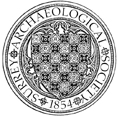Land North of Tanyard Farm, Horley (Horley North East Sector Development)
Soil stripping, mapping and sampling of four large areas by A Thorne of ASE. Area one revealed a series of linear features and scattered pits and postholes, probably of Roman date and representing agricultural activity. Substantial evidence of post-medieval and modern field systems was also present in both above and below-ground forms. Areas two and three were badly truncated and damaged, but revealed similar evidence for agricultural land management and activity in the Late Iron Age/Early Roman periods. Area four revealed only a single post-medieval linear feature.


